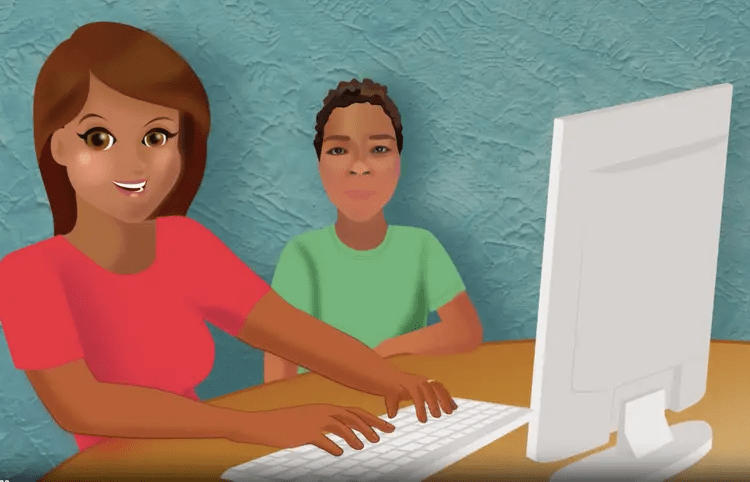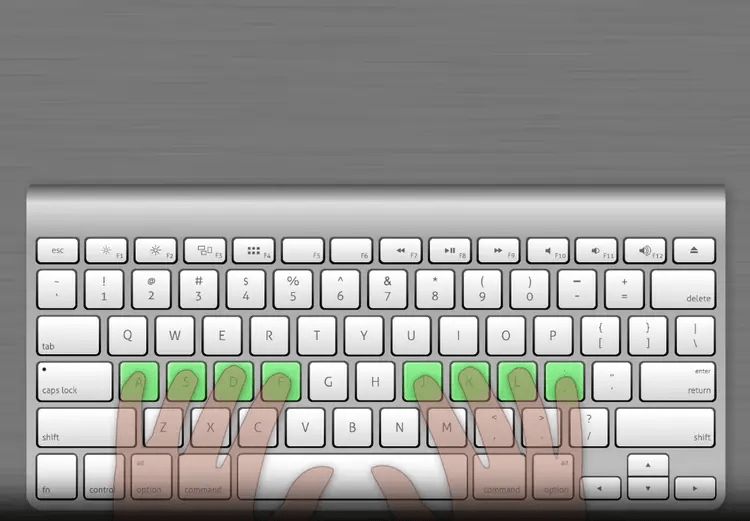What is Max's Touch Typing?
(Think Schoolhouse Rock Meets Typing 101)
Max is a young boy who learned how to touch type and it has been EXTREMELY beneficial for school. Max wants to share his love for typing with other kids!
Through an interactive typing program, Max uses music, rhymes, and demonstrations to teach children how to type, then finishes off by guiding them through a creative writing challenge.
Perfect for ages 7+
And if you love it (we know you will 😉) …you pay $10/month until cancelled.
Two free lessons:
Try out Max's Touch Typing to see if it's right for your child! No commitment. If you and your kiddo like it, subscribe for only $10/month until cancelled, to continue learning. It's that simple!
Interactive self-paced:
Each lesson can be watched an unlimited amount of times, and your child can come back after moving on if they don't feel confident quite yet.
11 Lessons + Quizzes:
Your child will learn how to touch type through catchy rhymes, upbeat music, and positive affirmations. Short tests after each lesson can be monitored by the parents to help assess children's progress!
Created by an award-winning teacher:
Arlene Richards taught the primary grades for 50 years, and during that time she created this touch typing method for her kindergarten class. Not only did her students learn how to type, they were also able to create and type short stories!
Special BONUS!
Is your child a budding writer? J.K. Rowlings or Stephen King perhaps? The last bonus section takes everything your child has learned and allows them to test their skills by typing their own short story. Let their creative juices flow!
Unlock Your Child's Typing Superpower
With 2 FREE LESSONS, you have absolutely nothing to lose.
If you want to continue, pay only $10/month until cancelled.



Why is touch typing so important?
Touch typing is a typing technique where you type without having to look at the keyboard, using all ten fingers to type efficiently.
TOP 6 BENEFITS to learning how to touch type
1. More Comfortable Taking Standardized Tests
Many standardized tests are now administered on computers and touch typing is an essential skill for navigating the digital interface, accessing resources, and responding to questions. Without touch typing skills, students may find it challenging to use the testing software effectively.
2. Increased Typing Speed
By using all your fingers and developing muscle memory, you can type much faster than if you only use a few fingers or hunt and peck. Increased speed means enhanced productivity, time savings… you get the picture.
3. Improved Accuracy
Touch typists tend to make fewer typing errors because they are less likely to hit the wrong keys. This can be especially important for tasks that require precision, such as data entry or coding.
4. Reduced Strain
Touch typing encourages proper hand and finger positioning, which can reduce strain and the risk of repetitive strain injuries (RSI) like carpal tunnel syndrome and promotes a more ergonomic typing posture.
5. Adaptability
Once you’ve mastered touch typing, you can comfortably use a variety of keyboard layouts, including QWERTY, AZERTY, and Dvorak, without having to relearn where the keys are located.
6. Lifelong Skill
Touch typing is a skill that you can carry with you throughout your life. It’s not tied to a specific job or industry, making it a valuable and enduring skill, not to mention enabling more fun when chatting, gaming, and programming.
Tired of watching your child hunt & peck on the keyboard?

What makes Max's Touch Typing so unique?
Max's Touch Typing Benefits
- Demonstrates which finger goes to which key for better touch typing understanding
- Uses music and rhyme to help kids remember the correct finger and key placement
- Tests after each lesson engage kids and increase WPM
- Kids have the opportunity to write their own short story increasing their creative writing and typing skills
Compared to Other Typing Programs
- No example of touch typing so kids learn by pecking keys
- Only engages the sight sense so kids don't remember what they've learned as well
- Only offer challenges, no lessons and tests for kids to go at their own pace
- Kids only type the words on the screen with no opportunity to create their own story
